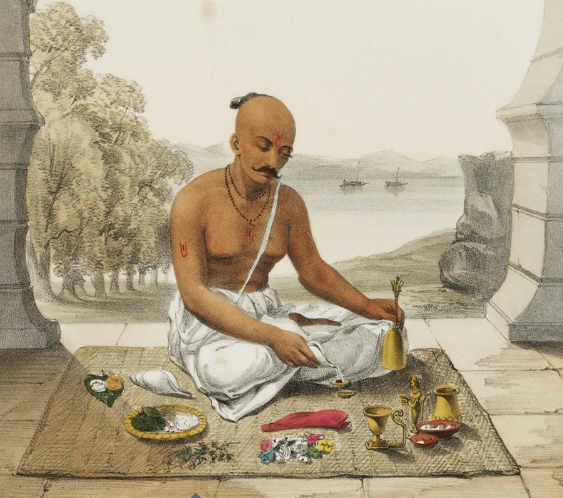FWP:
SETS
IDOL: {8,1}
RELIGIONS: {60,2}
For background see S. R. Faruqi's choices. For more on Ghalib's unpublished verses, see the discussion in {4,8x}.
Having a stiffly extended 'neck-vein' is a sign of pride because it suggests that one holds his head high. Thus also pride as sar-kashii , the 'pulling [up] of the head', which Gyan Chand uses in his commentary. The long thin neck-vein is thought of as string-like, so it can evoke the Brahminical sacred thread (which is worn over the shoulder and hanging down across the chest); on the zunnaar see {60,8}. Thus the Ascetics are stiff-neckedly and high-headedly proud of their (Islamic) religious attainments; and this very arrogance perhaps becomes a sign of culpable idolatry, like a sacred-thread. (Or, from the lover's point of view, a sign of terrible folly, since submission to the beautiful 'idol' is so self-evidently desirable.)
Note for grammar fans: Ghalib here attaches a Persian indefinite-article enclitic to an Urdu noun, turning but into bute . He very rarely does this. (Though he also does it with nigaare , in {109,6x}.) I can't see that it contributes anything at all to the present verse. Perhaps it just conveniently rebalances the meter.
The second line of the following verse, {109,6x}, has a structure quite similar to that of the second line in this verse.
Compare {195,1}, which uses a similar pattern of imagery.

Asi:
Having made servitude into an idol, the Ascetics become arrogant; so to speak, the string of the sacred-thread has for them become the neck-vein (pride). Thus from fear that we might become proud, we keep a head that we never place on the feet of any idol.
Or else this: that the Ascetics are proud of the sacred-thread; the reason is that they don't place their head on the feet of any idol.
== Asi, pp. 170-171